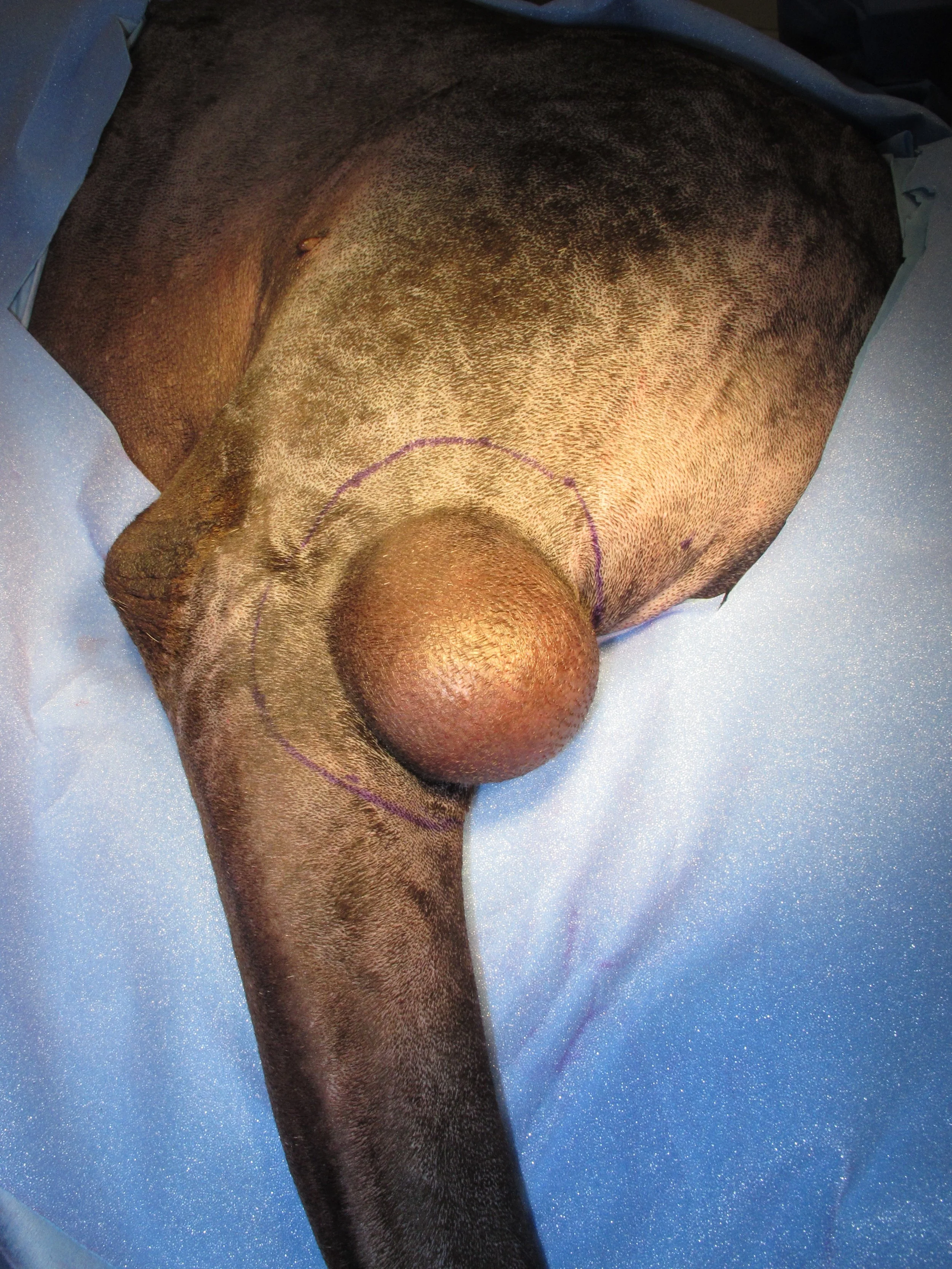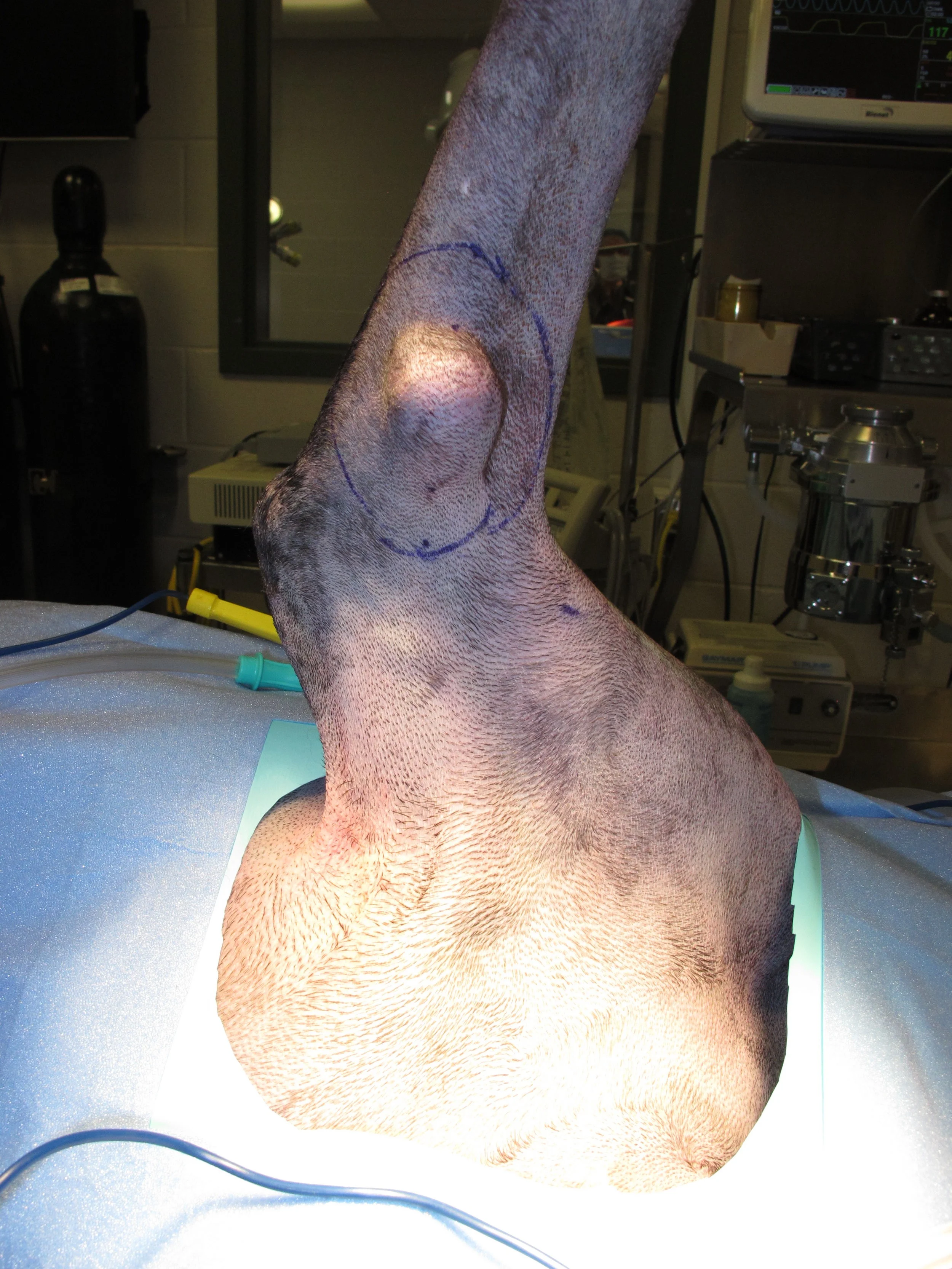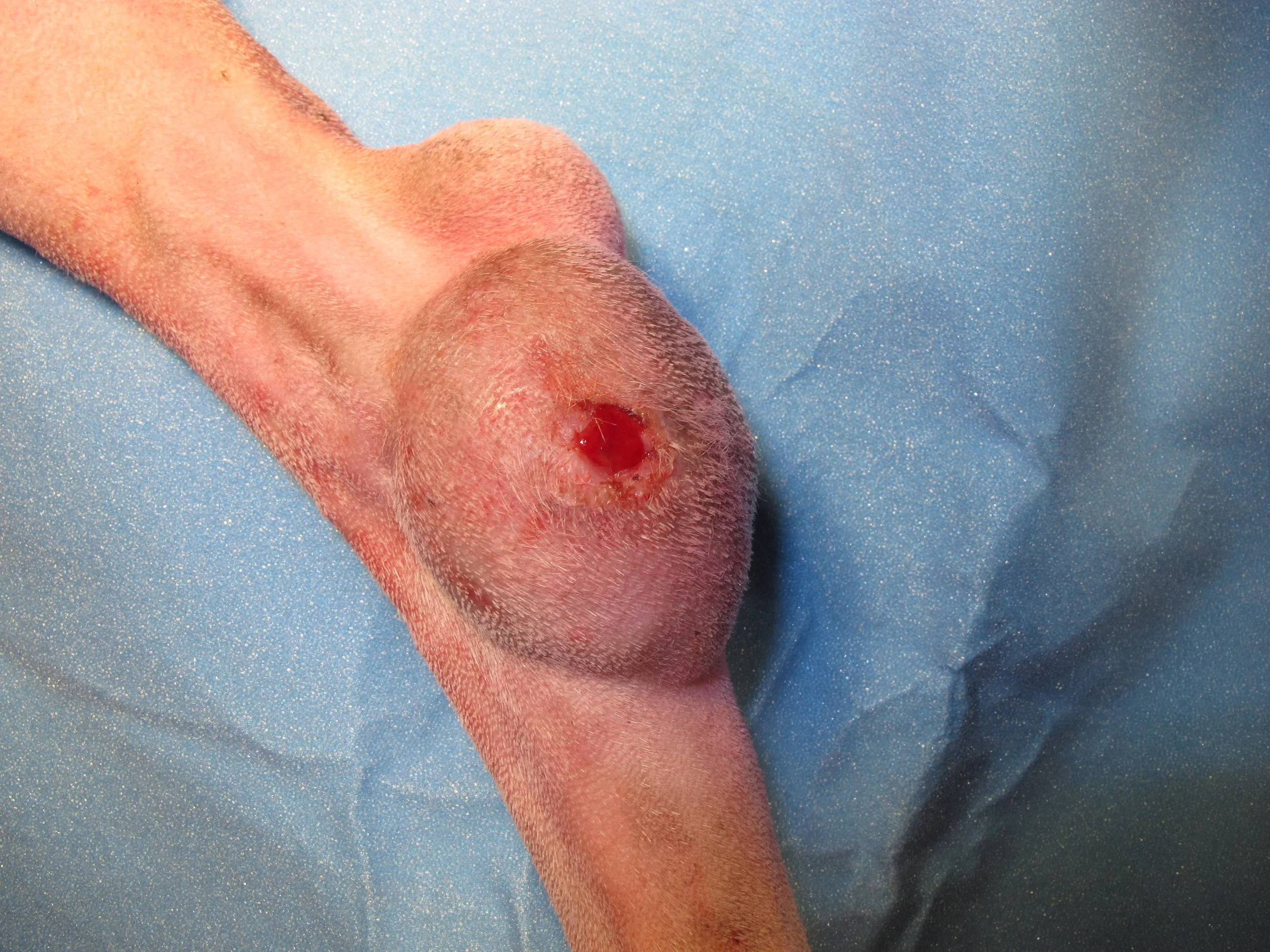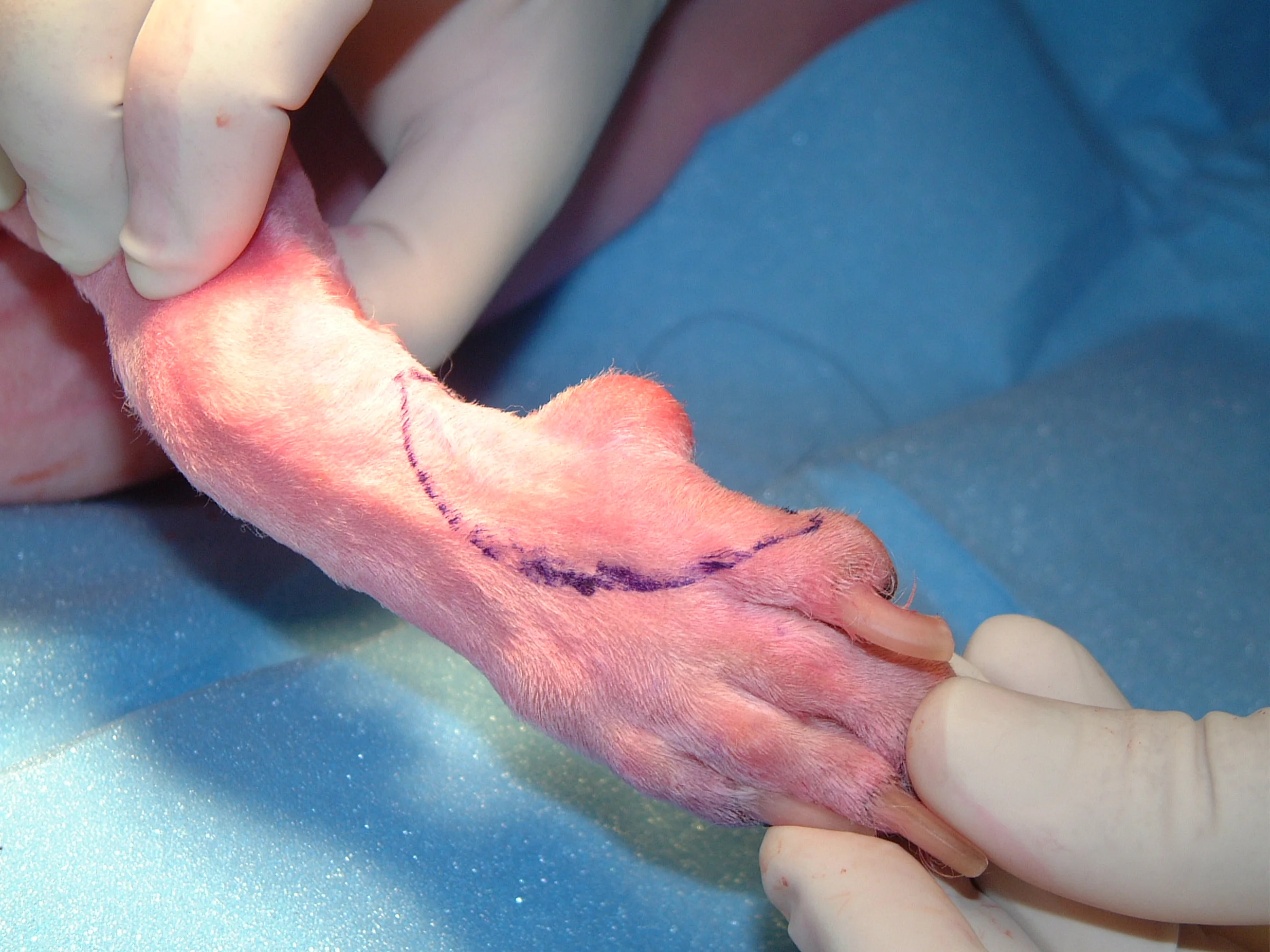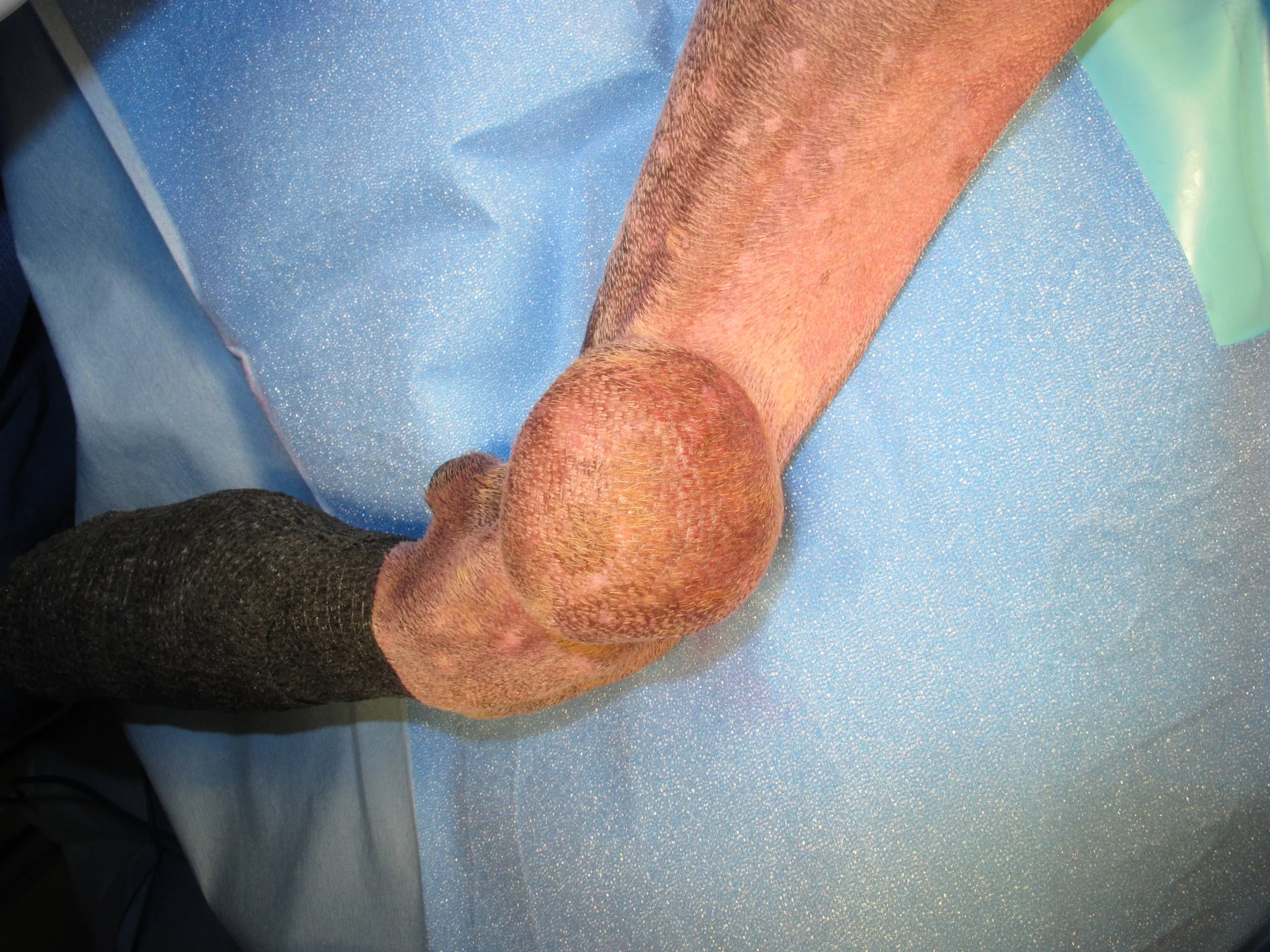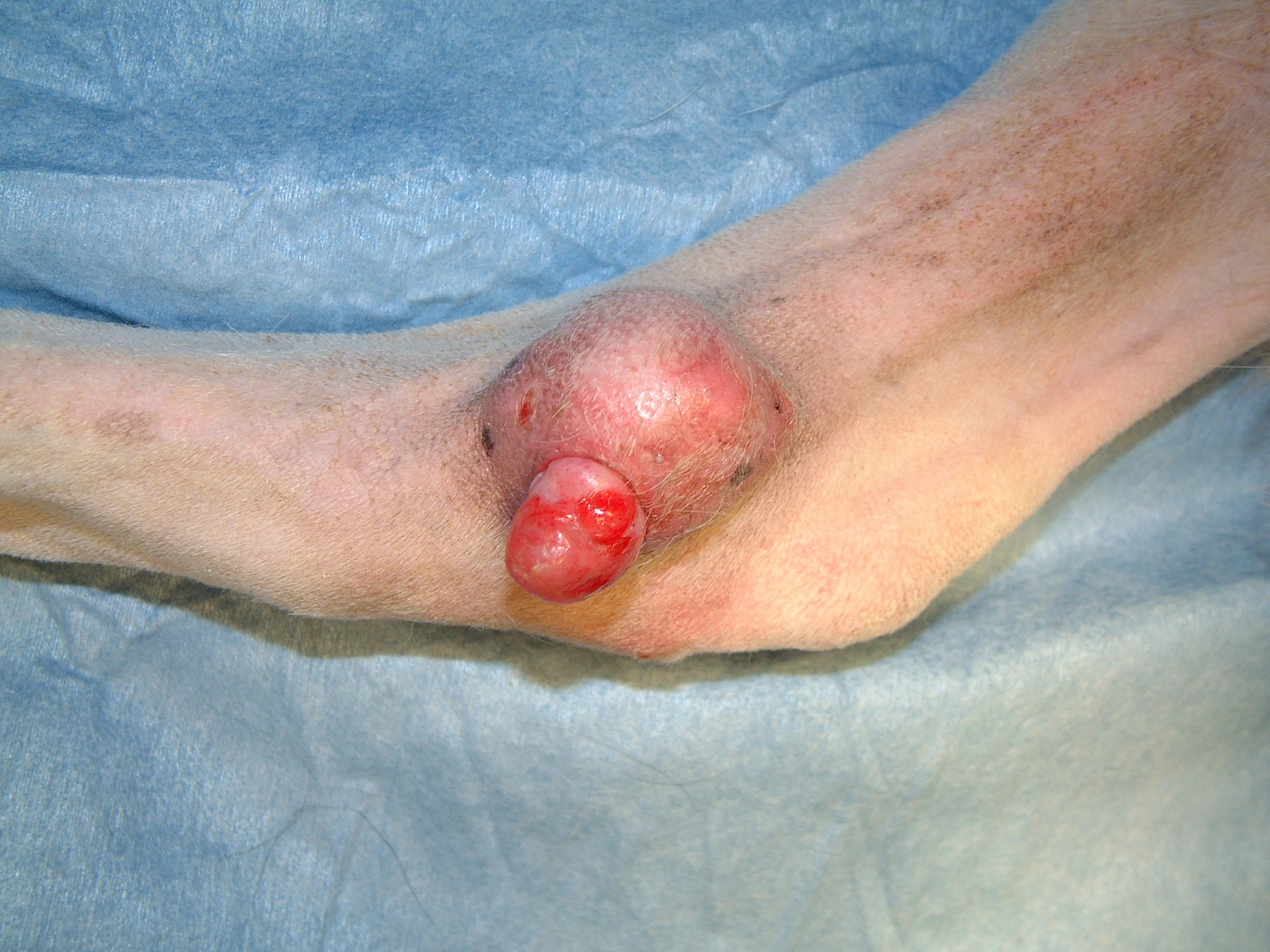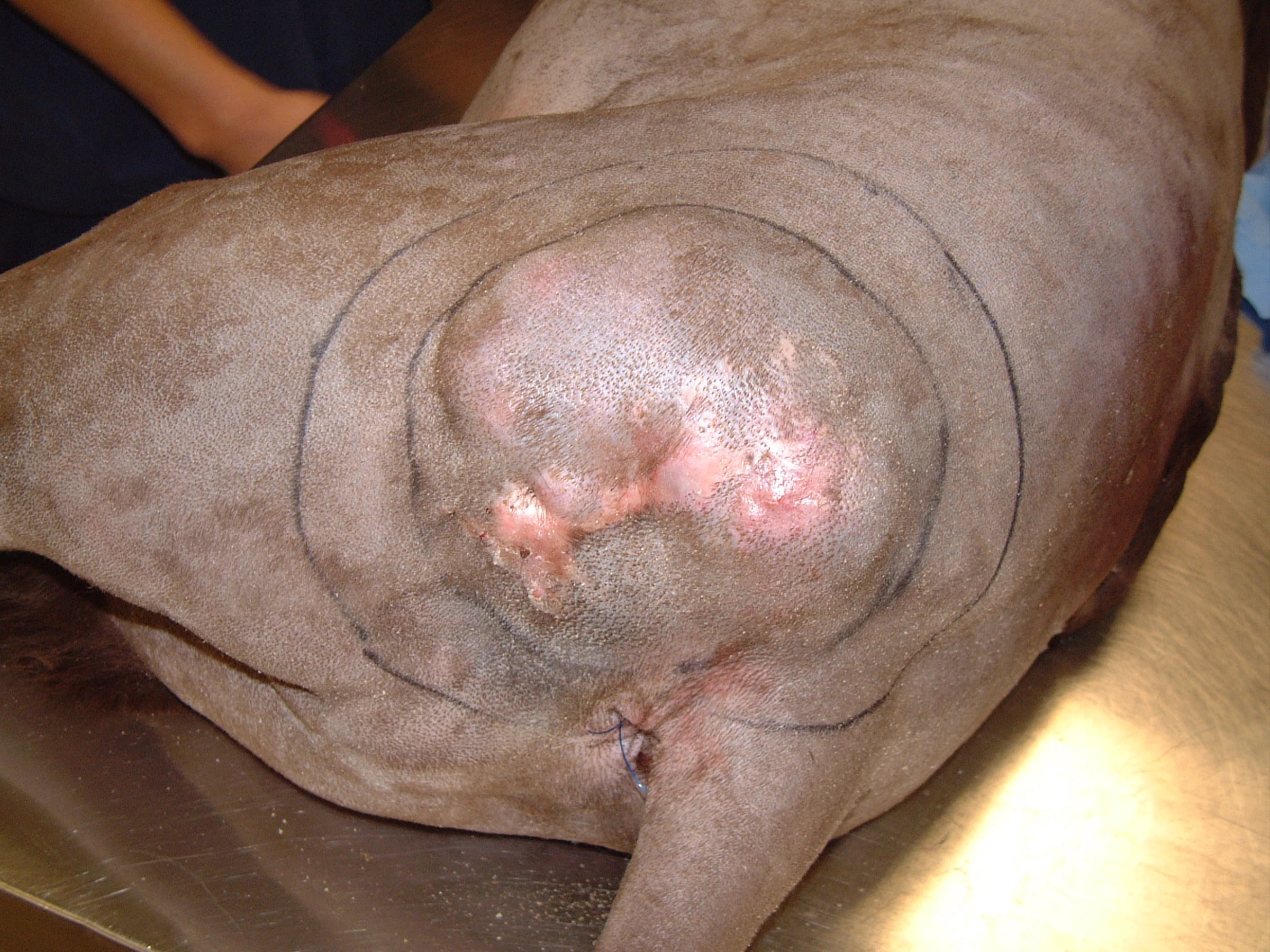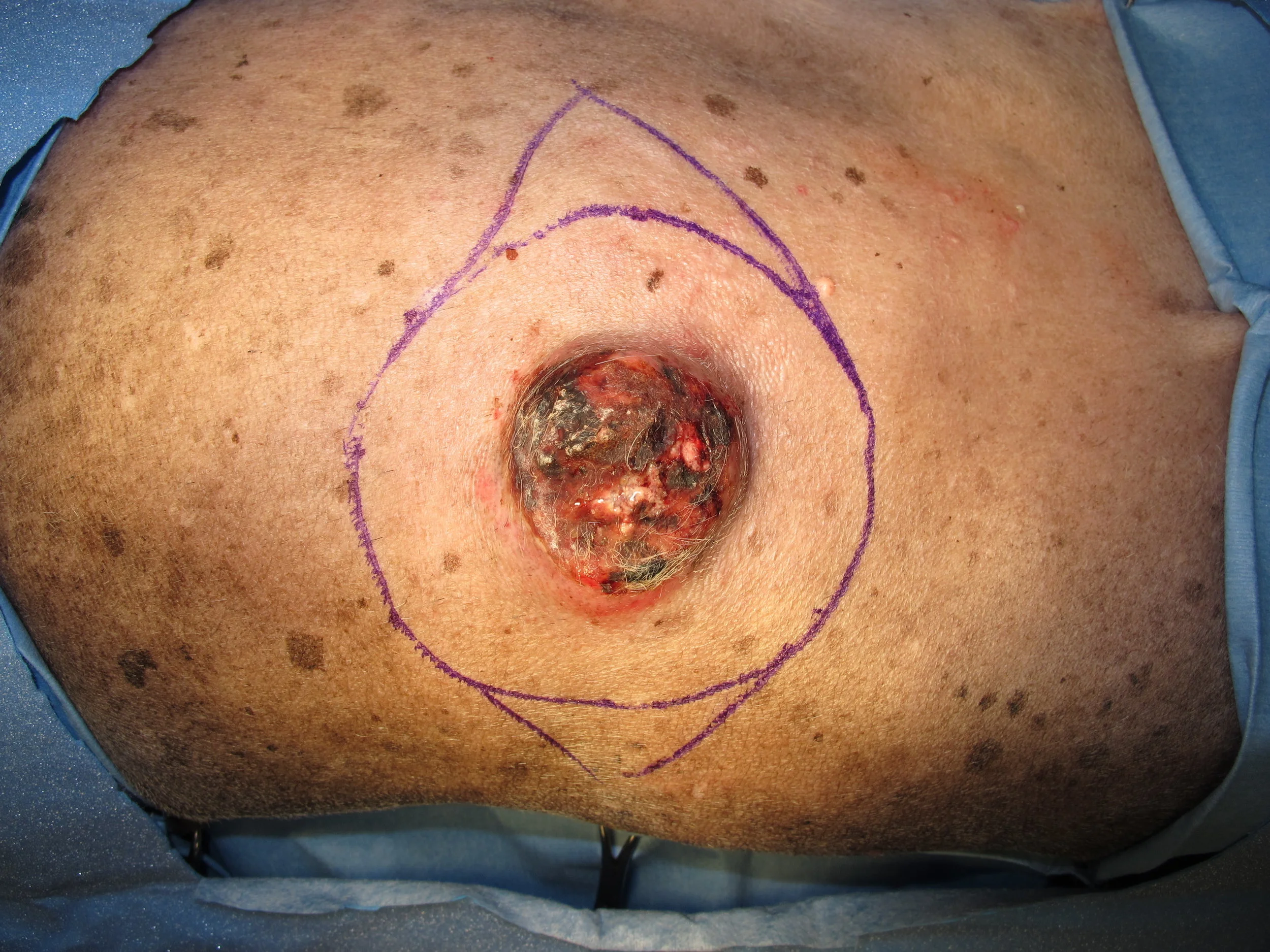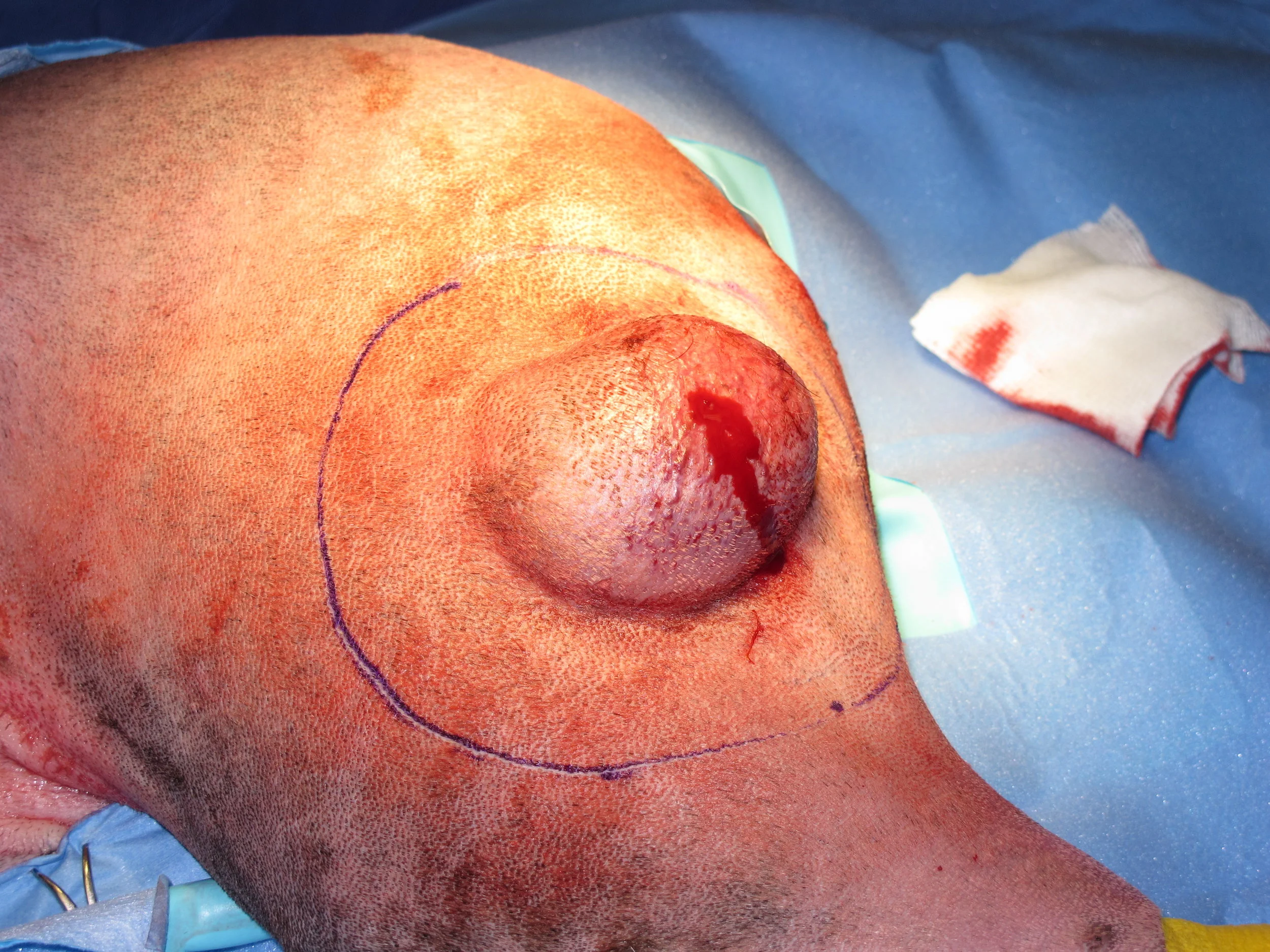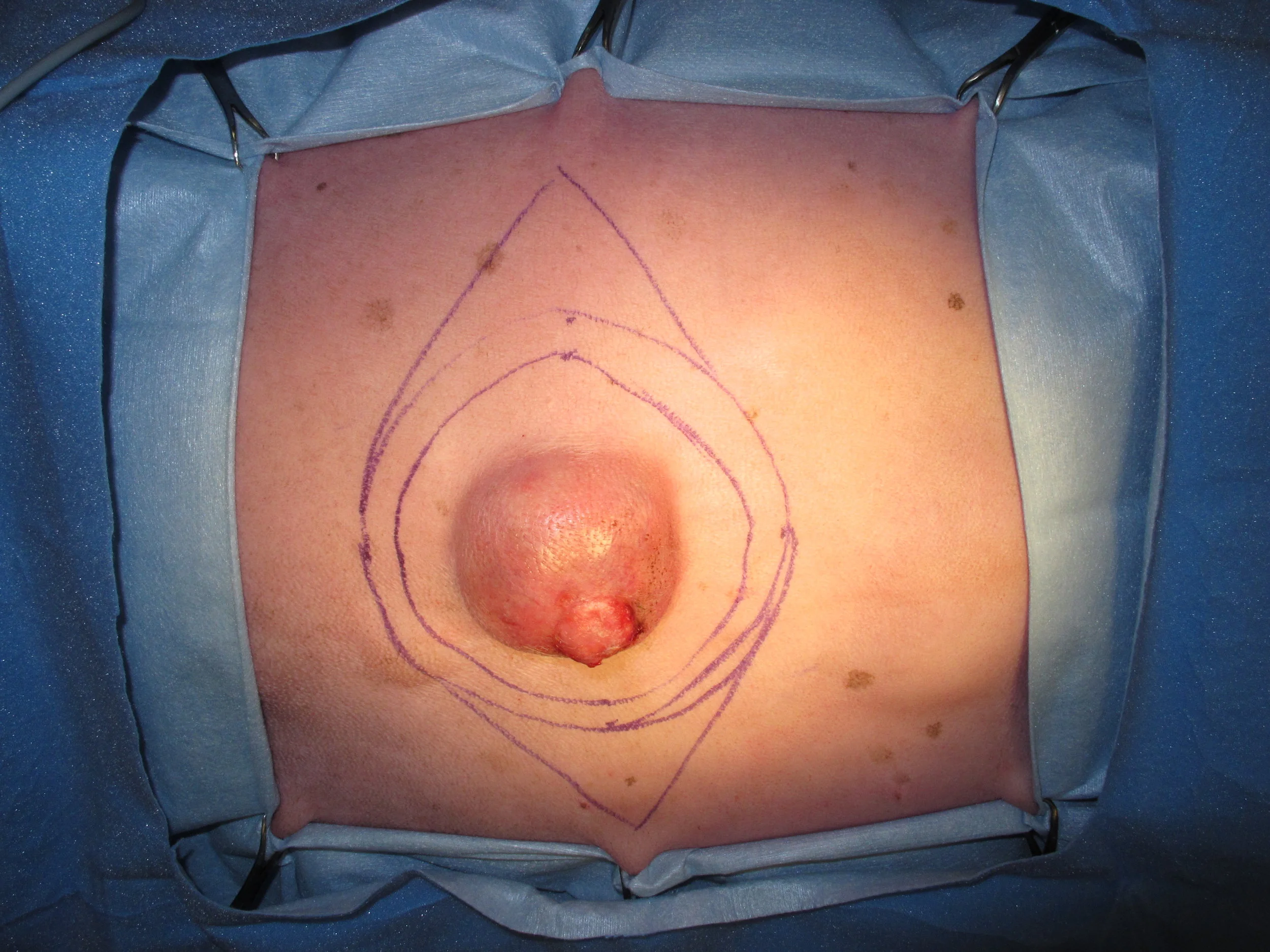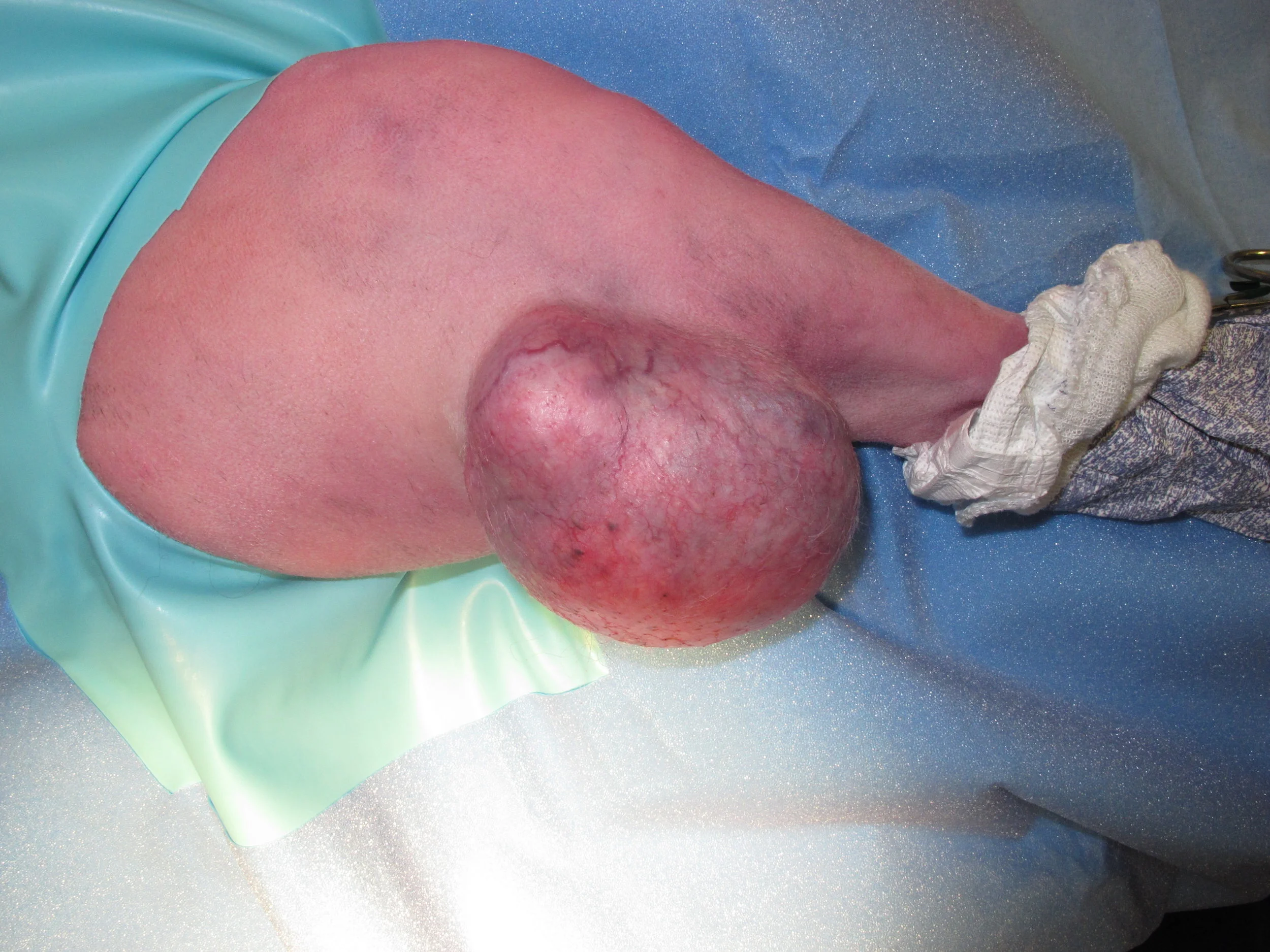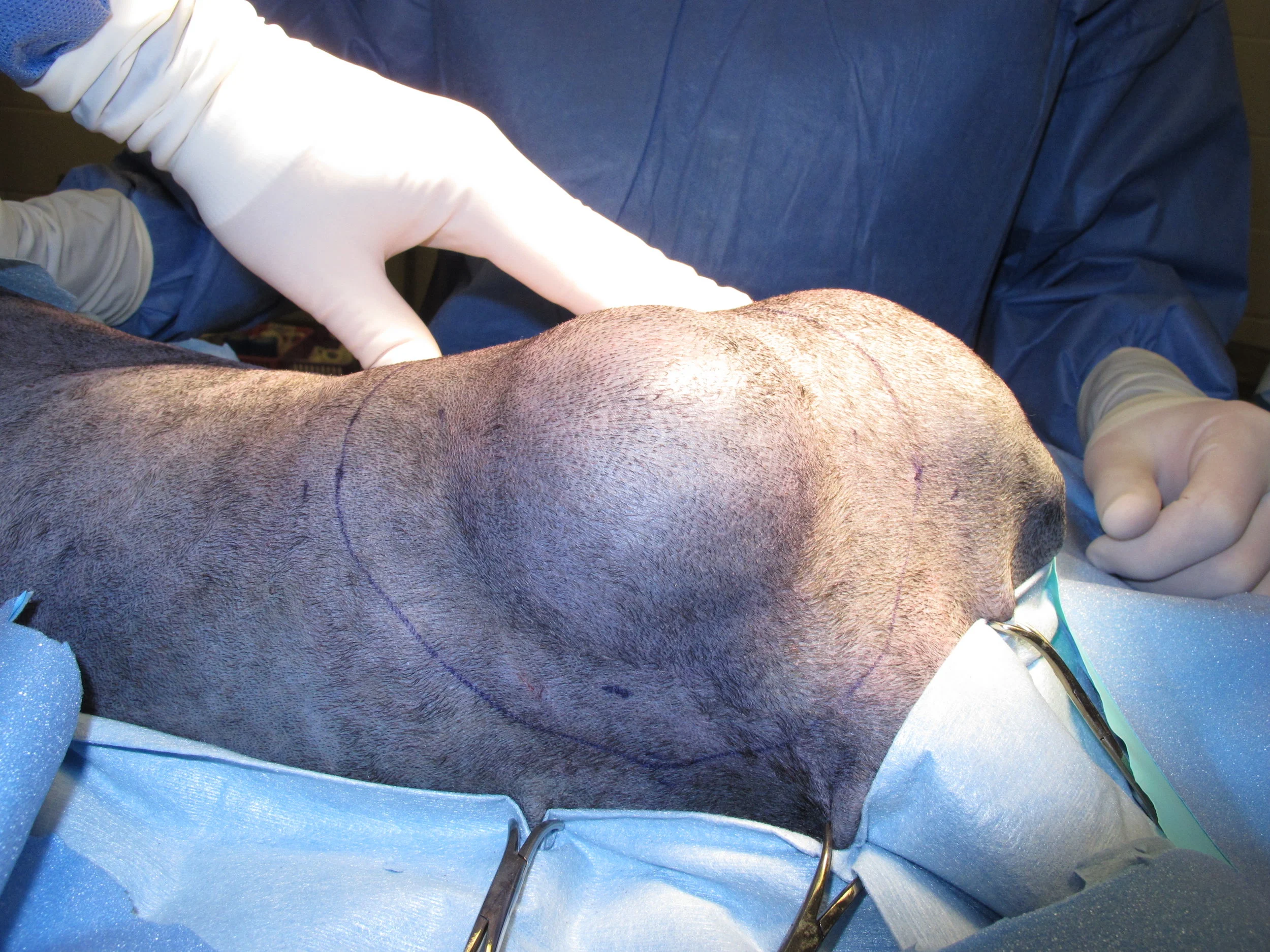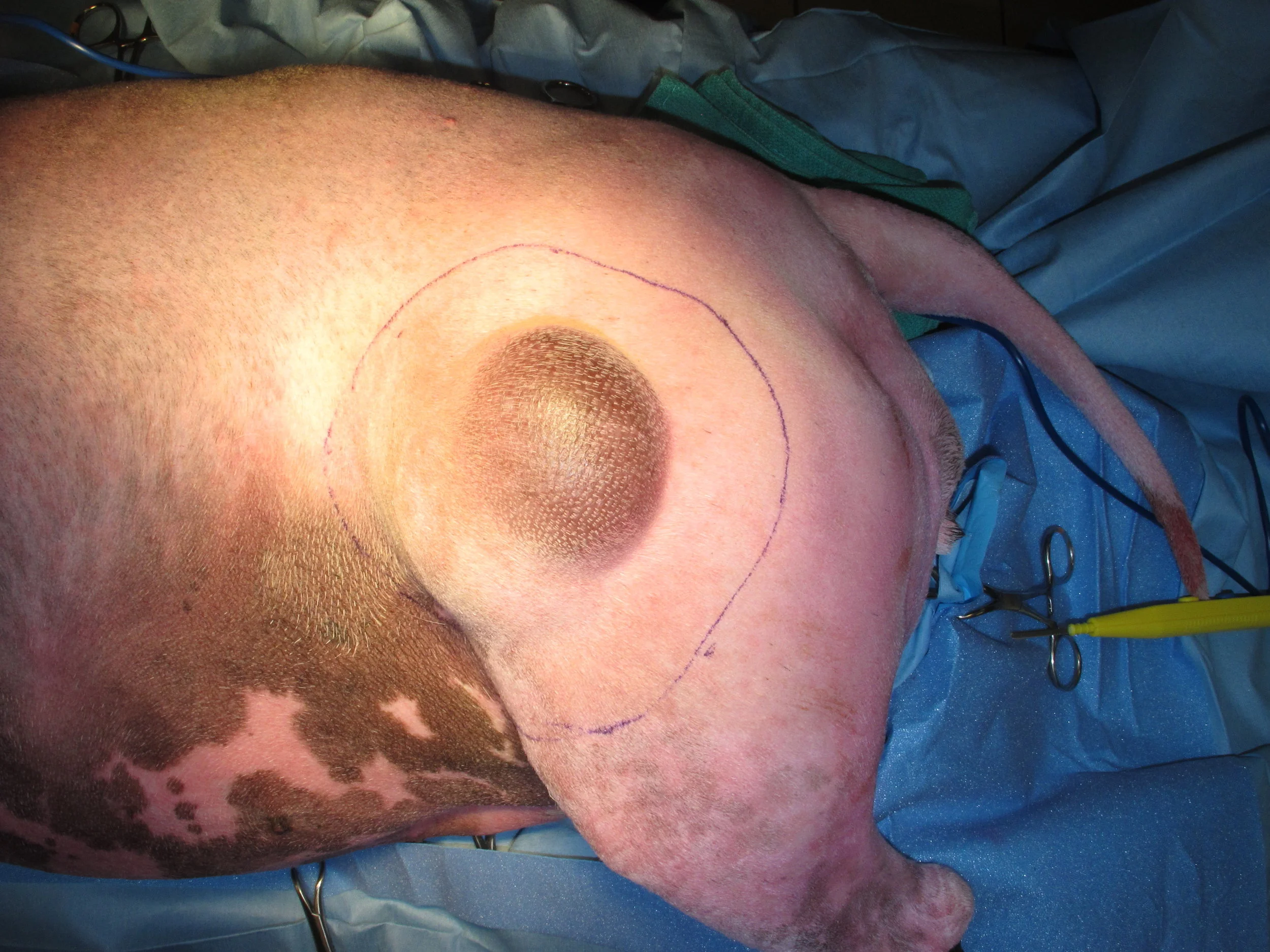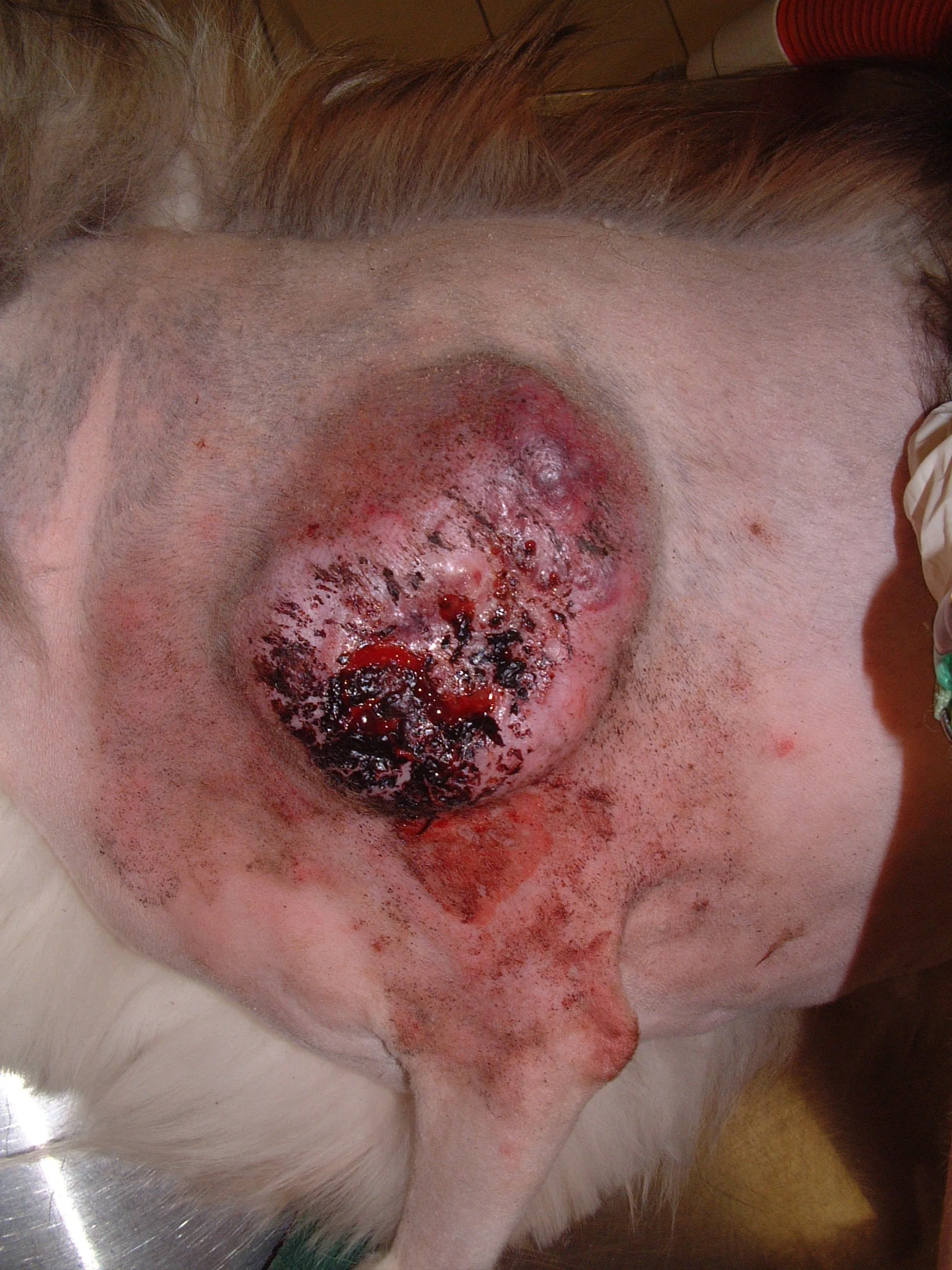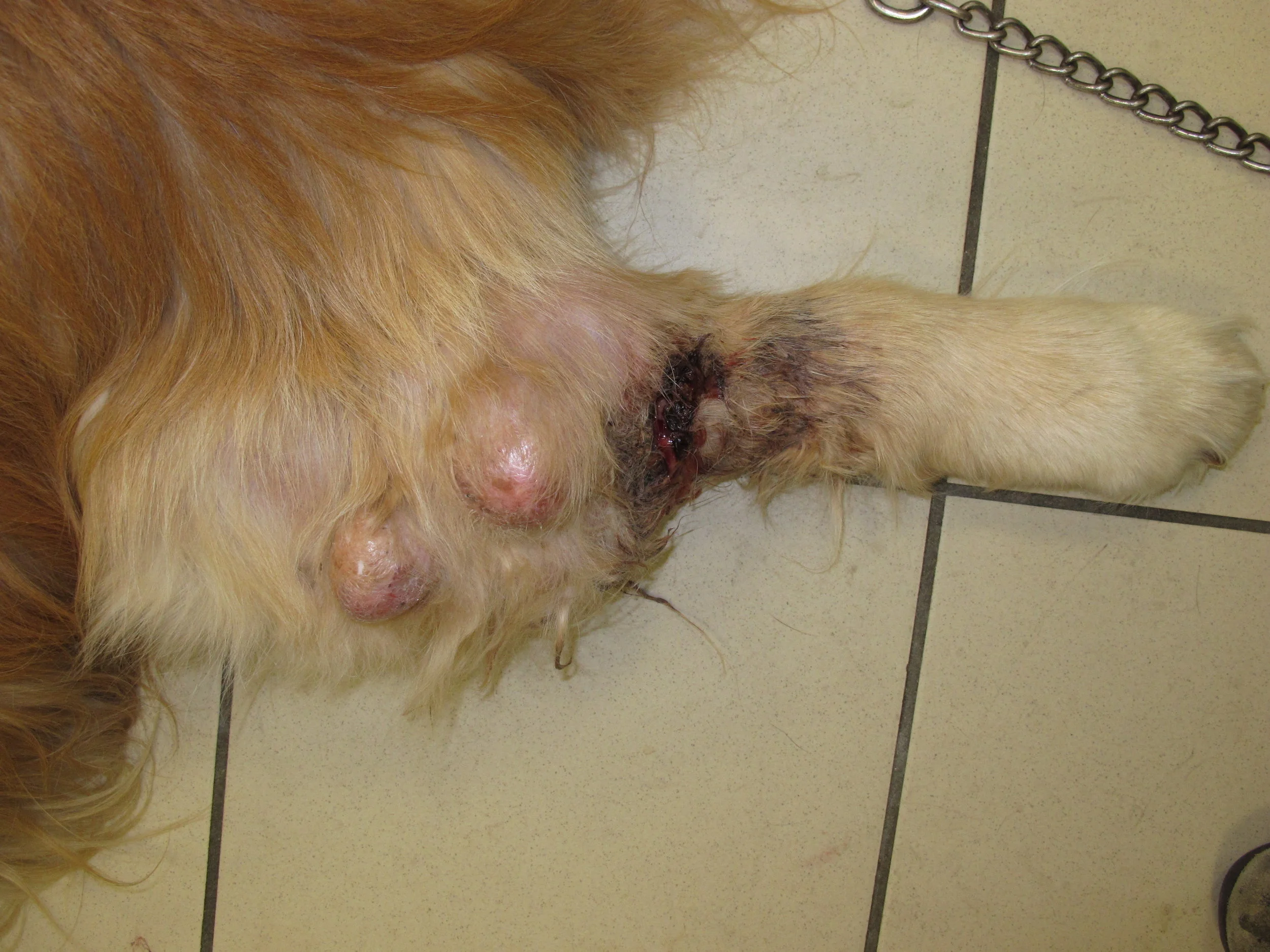soft tissue sarcomaS
BACKGROUND
Soft tissue sarcomas (STSs) are a diverse group of tumors and include fibrosarcoma, peripheral nerve sheath tumor, hemangiopericytoma, and liposarcoma. These are all grouped under STS because they have a similar biologic behaviour and outcome. Soft tissue sarcomas are locally aggressive tumors with a reportedly high risk of local recurrence, however this has been recently been questioned especially for STSs at or below the elbow and stifle. The risk of metastasis is low to moderate and is dependent on histologic grade.
DIAGNOSIS
The accuracy of fine-needle aspirates for the diagnosis of STSs is only about 50%. A diagnosis of a STS is often suspected if the fine-needle aspirate cytology is inconclusive because most infections and other tumor types can be diagnosed with a high degree of accuracy (> 90%) with fine-needle aspirates. An incisional biopsy can be considered for those tumors not diagnosed with a fine-needle aspirate.
CLINICAL STAGING
Ultrasound or CT scans of the tumor are occasionally recommended to determine the extent of the local tumor and assist in surgical planning. Thoracic radiographs or CT scans are recommended to assess the lungs for metastatic disease.
TREATMENT
The recommended treatment for STSs is surgical excision. The surgical approach depends on the location (truncal versus extremity), size, degree of invasiveness, and histologic grade. Wide excision (with 3cm lateral margins and one fascial layer for deep margins) is recommended for truncal STSs, grade III STSs, STSs > 5cm, and invasive and fixed STSs. Wide excision of STSs on the limbs and head is often not possible. In these cases, particularly if mobile, well-circumscribed and < 5cm, then marginal excision is possible with low local recurrence rates. In one large study of marginally excised STSs in dogs, the overal local recurrence rates for histologically incompletely excised grade I, II, and III STS were 7%, 34%, and 75%, respectively; and no dog with a completely excised STS developed local recurrence regardless of histologic grade. Historically, radiation therapy has been recommended for incompletely and/or marginally excised STSs and this is often recommended in the treatment of STSs in people, but there is no evidence to support this multimodality therapy in dogs. There is no published study comparing surgery alone to surgery and radiation therapy for dogs with incompletely excised STSs. There have been six studies published on marginal and/or incomplete histologic excision of STSs alone and three studies published on radiation therapy following marginal and/or incomplete histologic excision of STSs. While it is very difficult to compare these studies because of different study criteria, the local recurrence rates varied from 11%-28% and 16%-31% for surgery alone and surgery and radiation therapy, respectively.
Chemotherapy may be indicated for dogs with grade III STSs, but the current published data shows no significant difference in outcome between dogs who were and were not treated with postoperative chemotherapy.
PROGNOSIS
The prognosis is very good for dogs with STSs. The risk of metastasis is dependent on histologic grade with metastasis reported in up to 13% of dogs with grade I tumors, 20% of dogs with grade II STS, and up to 50% of dogs with grade III tumors. The median survival time following surgical excision alone is 1,416 days and 2,270 days for dogs with incompletely excised tumors treated with postoperative radiation therapy.
Last updated on 6th March 2017




